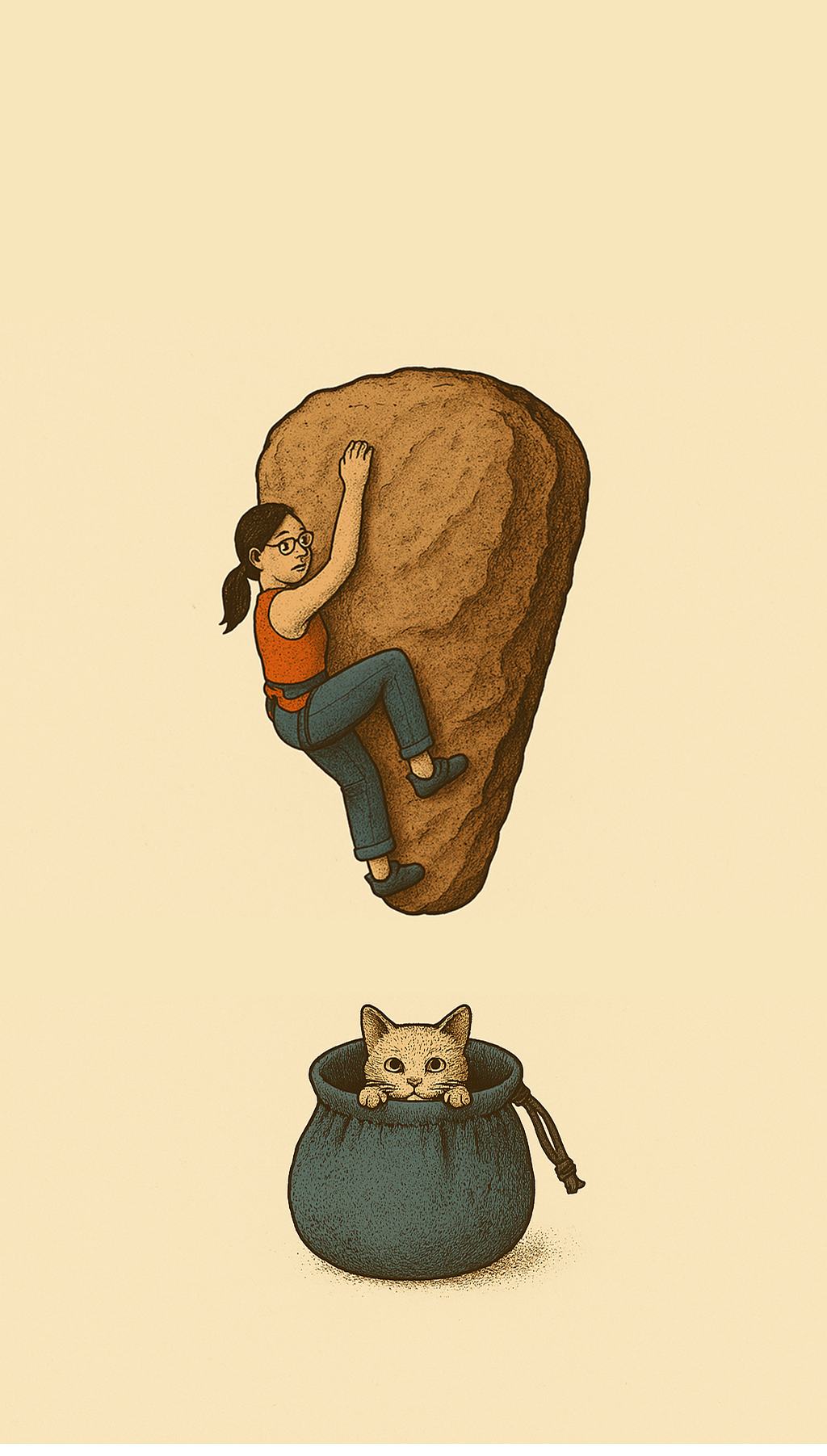“Smartphone Footwork: A Three-Level Camera Drill for Climbing Precision and Ease”
Context & Purpose
Climbers often think of foot placement as purely an act of aiming and pushing, forgetting the real work of sensing and adjusting in space. Even worse, it’s easy to get stuck in your own head—overthinking, tensing, and micromanaging your limbs.
This drill turns your smartphone camera into an external eye to help you practice calmer, more precise, and more sensory-aware footwork. By observing yourself in the camera view, you externalise your goal: treating your foot not as “you” to be muscled around, but as an object to be accurately and smoothly guided.
It also helps you practice using visual feedback the way you would when reading holds or foot chips on the wall—and trains you to respond in real time to what you see and feel.
Equipment & Setup
A smartphone or tablet with a camera (front or rear-facing) and screen you can see while moving.
Socks, bare feet, or climbing shoes.
Any floor surface, table/furniture legs, or textured areas to slide on.
Optional small targets or “holds” to aim for.
Level 1: Guiding Movement in the Camera Frame
Goal: Externalise trajectory planning using your camera screen as feedback.
Instructions:
Set up your camera so your foot and the area of movement are clearly visible.
Watch your foot on the screen while you slide it along the floor or up/down a table leg.
Treat your foot as if it’s not you, but an external target you’re moving on screen.
Focus on guiding it visually to match your desired path or direction, not muscling it.
Why:
This trains you to plan and execute foot paths based on external cues, the way you do when route reading and placing feet on holds in real life.
Level 2: Sensory Feedback Through the Camera
Goal: Deepen the link between visual and sensory information.
Instructions:
Keep your camera view running as you slide your foot.
This time, split your focus between what you see on screen and the sensory details:
Sound of sliding.
Friction or texture underfoot.
Subtle shifts in pressure.
Imagine you're watching someone else's foot in a video, and simply noticing how they adjust to what they feel.
Why:
By training your awareness of real-time sensory cues while watching your movement externally, you’re building the crucial feedback loops that allow calm, adaptive footwork.
Level 3: Target Accuracy in the Camera
Goal: Practice placing your foot accurately on small holds using the camera for precise feedback.
Instructions:
Place a small target (e.g. tape mark, object, or small hold) in view.
Watch on your screen as you move your foot to land precisely on the target.
Focus on two things:
Accuracy of placement in the camera frame.
Sensation of contact and pressure on the target.
Repeat, comparing subtle differences between attempts.
Why:
This mimics real climbing, where you need to plan, see, and feel the foot landing correctly—without overthinking or tensing up.
Optional Notes for Learners
The smartphone isn’t a crutch; it’s an external eye to reduce internal strain and help you see and guide your foot more calmly.
For some, these drills can produce surprising results—like the sense of the foot “floating” or moving almost automatically. That’s fine—but it’s not the goal.
Avoid “end-gaining” or forcing it. Instead, treat each attempt as an experiment in perception-led movement.
Summary
Your smartphone camera isn’t just for beta videos. It’s a powerful training partner for externalising your footwork goals and integrating visual and sensory feedback. By practicing this three-level progression, you can reduce unnecessary effort, improve accuracy, and develop the kind of smooth, confident footwork that translates directly onto the wall.
